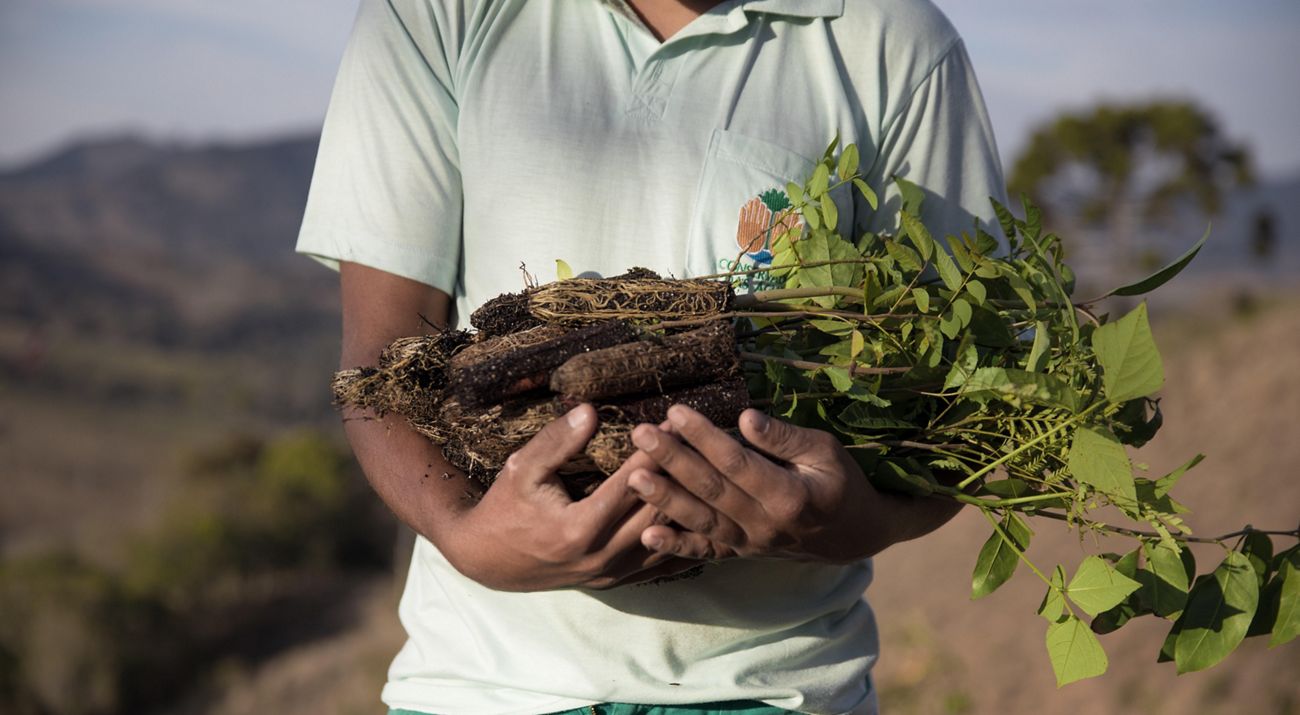
Yes, Trees Are a Viable Climate Solution
We can’t reach global climate goals without cutting emissions—but we can’t reach them without nature either.
If there was one unlikely buzzword to come out of the most recent gathering of the World Economic Forum (WEF) in Davos, Switzerland, it was “tree-planting.”
WEF launched a global initiative to “grow, restore and conserve 1 trillion trees around the world,” with the support of leaders like United States President Donald Trump, primatologist Dr. Jane Goodall, and Salesforce co-CEO Marc Benioff. Claire O’Neill, the chair of this year’s UN climate conference, praised the campaign and tweeted, “we will put the power of natural climate solutions at the heart of COP 26.”
But this surge of support for reforestation and natural climate solutions brought with it accusations of corporate greenwashing and misinformation about what natural climate solutions can accomplish. One headline read, “Global Elites Have Found A Way To Do the Absolute Minimum For The Climate.”
Let’s go through a few points that critics have raised:
- “Planting trees is not enough to prevent climate change.” It is certainly true that we cannot avoid climate change solely by planting trees. But touting that fact in this case is a strawman argument: very few (if any) analysts, climate action professionals or conservationists suggest natural climate solutions, let alone just tree-planting, are enough.
Natural climate solutions cover more than 20 different activities, not just tree-planting. A comprehensive body of science led by TNC suggests that together, these 20 pathways could generate over 30 percent of the emission reductions needed by 2030 to be on a pathway toward stabilizing temperature increases by 2050 at well below 2°C.
Virtually all recent analyses of the emissions reductions needed suggest that we simply cannot achieve those goals without nature. In other words, nature climate solutions alone cannot solve the climate problem, but they are an essential part of solving the problem.
- “Planting trees can be downright counterproductive, limiting farmland needed to feed a growing population.” Research by TNC scientists looks at precisely these constraints and concludes that with changes in agricultural practices, feeding more people doesn’t necessarily mean expanding the agricultural land footprint. To jump to this conclusion overlooks the science on the subject and potential for sustainable agricultural practices.
That said, reforestation is “not as simple as blanketing the earth with trees,” as our partners in the Nature4Climate initiative have written. There are crucial considerations that must be taken into account in managing forests: from the spacing and species of trees being planted, to the support and consent of local communities. Experts show that respecting the rights of local and Indigenous communities that manage forests is one of the best ways of preventing deforestation in the first place.
- “Supporting reforestation gives polluters a pass from cutting emissions.” Much like the first claim, I’d be surprised to hear any serious advocate of natural climate solutions say we don’t need to reduce emissions in the energy sector and elsewhere. Campaigns that tout tree-planting without emission cuts should raise red flags.
The real distraction is presenting these two tactics—using nature to capture greenhouse gases and reducing our dependence on fossil fuels—as if they’re mutually exclusive.

We’ve heard many of these arguments before. Going all the way back to the Kyoto Agreement in 1997, some climate advocates have raised concerns that a focus on nature would distract from pushing for the reduction of energy.
Since then, the science around natural climate solutions has become even clearer: nature must be a part of the response to climate change. Last September, Greta Thunberg spoke out strongly in favor of natural climate solutions, urging the public to protect and restore nature, and fund natural climate solutions.
We’re getting there. We’ve made tremendous progress in introducing natural climate solutions to the public and decision-makers in the last few years: a campaign to plant a trillion trees taking center-stage in Davos is a sign that the wind is in our sails. The fact that political and business leaders are also jumping on board does not make the science around natural climate solutions any less true.
“Planting trees is good of course, but it is nowhere near enough of what is needed, and it cannot replace real mitigation and rewilding nature,” said Thunberg during her speech at Davos. TNC agrees. We will keep applauding companies and governments that are stepping up with ambitious efforts to protect nature and harness its power to tackle climate change. We’ll also keep looking for ways to accelerate the shift to clean, renewable energy. These two paths are inseparable, and progress on both is essential to getting us to a sustainable future for all.
Global Insights
Check out our latest thinking and real-world solutions to some of the most complex challenges facing people and the planet today.

